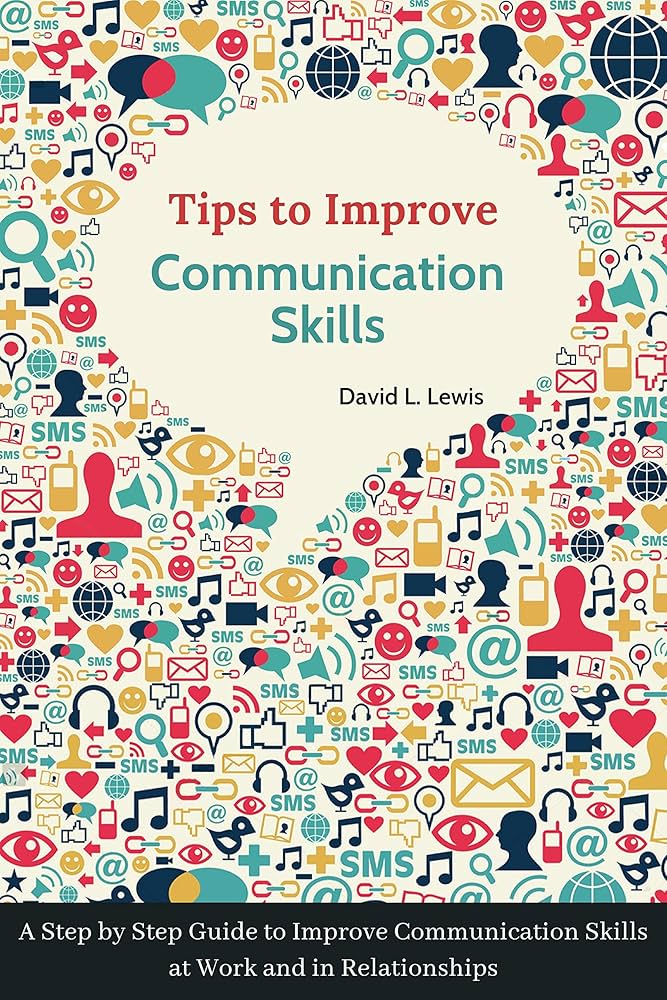A Step-by-Step Guide To Improving Communication Skills At Work

Research has shown that nearly 60% of workplace misunderstandings stem from poor communication. Have you ever considered how much more effective your team could be if these communication barriers were eliminated? Enhancing communication skills is not just beneficial but essential for creating a thriving professional environment.
The history of workplace communication reveals a constant evolution, from telegraphs to emails and now instant messaging. Despite this progress, a staggering 70% of employees feel their companies fail to communicate change effectively. By following a structured guide, organizations can bridge these gaps and foster a more cohesive workforce.

Essential Communication Skills Needed in Every Workplace
Active listening is a fundamental skill in any workplace. It involves not just hearing but truly understanding and interpreting the message. When employees practice active listening, they can avoid misunderstandings and increase productivity. According to this post, active listening can improve team collaboration and problem-solving skills. This skill fosters a more positive work environment.
Clear articulation helps convey ideas effectively. Being able to express thoughts concisely makes communication efficient and direct. This skill is especially important in avoiding confusion and ensuring everyone is on the same page. Clear communication also boosts confidence and professionalism at work.
Non-verbal communication is another critical skill. Body language, facial expressions, and gestures can communicate more than words alone. Understanding these cues helps in interpreting the true meaning behind someone’s words. Non-verbal signals can strengthen or undermine the spoken message, making them essential to master.
Providing and receiving constructive feedback is vital for professional growth. It encourages continuous improvement and learning. Constructive feedback is specific, positive, and aimed at helping the recipient improve. According to here is the article, effective feedback can enhance employee engagement and performance. It’s a skill that must be practiced regularly for the benefit of both individuals and the organization.
Listening Actively
Listening actively is more than just hearing words. It means fully concentrating on the speaker and understanding their message. This skill requires paying attention, showing empathy, and providing feedback. Practicing active listening can significantly improve workplace relationships. It fosters mutual respect and trust among team members.
One essential aspect of active listening is maintaining good eye contact. This shows the speaker that you are engaged and interested in what they are saying. Avoid distractions like checking your phone or looking around the room. This focus helps in building a stronger connection. It also ensures you don’t miss important details.
Asking questions is also a key part of active listening. It clarifies points and shows you are paying attention. Questions can help the speaker feel valued and understood. They also encourage a deeper conversation. By asking relevant questions, you can gain more insights.
Providing feedback is the final step in active listening. This can be done through verbal responses or non-verbal cues, like nodding. Feedback lets the speaker know you have understood their message. It’s essential to be honest yet considerate when giving feedback. This skill can greatly enhance communication efficiency in the workplace.
Articulating Clearly
Articulating clearly is vital for effective communication. This means expressing your ideas in a way that others can easily understand. Clear articulation ensures that your message is received as intended. It helps to avoid misunderstandings and confusion. This skill is especially important in professional settings where precision matters.
One way to improve articulation is by practicing speaking slowly and enunciating your words. This gives listeners time to process what you are saying. It also reduces the chances of words getting mumbled or lost. Pausing occasionally for emphasis can also help. This technique makes your speech more engaging and easier to follow.
Using simple language and avoiding jargon can also enhance clarity. Technical terms can confuse listeners who are not familiar with them. Instead, choose words that are straightforward and familiar. This approach broadens your audience’s understanding. Additionally, using short sentences can make complex ideas more digestible.
Incorporate visuals where appropriate. Slides, charts, and diagrams can complement your spoken words. Visual aids help to reinforce your message and make it more memorable. According to this post, effective visualization can enhance comprehension by up to 80%. This makes your communication not only clear but also impactful.
Non-Verbal Communication
Non-verbal communication is a powerful tool that conveys messages without words. It includes facial expressions, body language, gestures, and even posture. These cues can reinforce what we are saying verbally or contradict it, creating confusion. Understanding non-verbal signals can enhance our ability to communicate effectively. It’s an essential skill in both personal and professional interactions.
Facial expressions are one of the most significant aspects of non-verbal communication. A smile can convey friendliness and warmth, while a frown might indicate displeasure or confusion. It’s important to be aware of your facial expressions as they can impact how your message is received. Consistency between your words and facial expressions builds trust. People are more likely to believe your message if your expressions match your words.
Body language, such as gestures and posture, also plays a crucial role. Crossing your arms might suggest defensiveness, while open arms can indicate openness and willingness to engage. The way you hold yourself can communicate confidence or insecurity. Paying attention to your body language can help you project the image you want. This can make a significant difference in how others perceive you.
Eye contact is another vital component of non-verbal communication. Consistent eye contact can show that you are interested and engaged. It helps in building a connection with the person you are speaking to. However, too much eye contact can be overwhelming, so it’s about finding the right balance. Proper eye contact can enhance understanding and rapport.
Gestures can emphasize and illustrate verbal messages. Simple hand movements can underline important points and make communication more engaging. However, overusing gestures can be distracting, so it’s essential to find a balance. Effective use of gestures can make your message more memorable. According to here is the post, combining gestures with words increases retention by nearly 50%.
Overall, non-verbal cues can significantly impact the quality of our interactions. Being mindful of these elements makes you a better communicator. It can lead to more meaningful and effective exchanges. This skill is invaluable in navigating workplace dynamics and fostering positive relationships.
Constructive Feedback
Constructive feedback is essential for growth and improvement. It focuses on providing specific, actionable suggestions that help the recipient enhance their skills. Unlike negative criticism, constructive feedback is positive and supportive. It aims to build confidence and encourage development. This kind of feedback is fundamental in any workplace.
One key element of constructive feedback is specificity. Vague comments like “good job” or “needs improvement” are not helpful. Instead, highlight specific areas where the person excelled or needs to improve. This clarity enables the recipient to understand exactly what to work on. Such detailed feedback leads to more effective results.
Timing is also critical when giving feedback. Providing feedback soon after the event helps ensure it’s relevant and impactful. Delaying feedback can diminish its effectiveness. Timely feedback means the situation is fresh in everyone’s mind. This makes it easier to understand and act upon.
Maintaining a balance between positive and negative comments is crucial. Too much negative feedback can be discouraging, while overly positive feedback may seem insincere. Striking the right balance helps the recipient feel motivated and respected. This balance fosters a more open and trusting relationship. It makes future feedback sessions more productive.
Using a structured approach can make feedback more effective. One common method is the “sandwich” technique. This involves starting with positive feedback, followed by constructive criticism, and ending with more positive comments. This approach ensures that the recipient feels valued while also understanding areas for improvement. It creates a balanced and supportive feedback environment.
It’s equally important to be open to receiving feedback. This demonstrates a willingness to learn and improve. Being receptive to feedback can enhance personal and professional growth. It also sets a positive example for others. Effective feedback, both given and received, is a cornerstone of a healthy workplace culture.
Email Etiquette
Email etiquette is crucial for professional communication. It helps convey your message clearly and respectfully. Using proper email etiquette can make a significant difference in how your message is received. It reflects your professionalism and attention to detail. Adopting good email practices fosters better relationships at work.
One essential aspect of email etiquette is having a clear and relevant subject line. A well-crafted subject line gives the recipient a quick summary of the email’s content. It helps them prioritize their emails effectively. Clear subject lines save time and ensure that your message is addressed promptly. They also set the tone for the email.
Using a polite and professional tone is key to effective email communication. Avoid using slang or overly casual language. Starting with a proper greeting shows respect and sets a positive tone. Similarly, closing the email with a courteous phrase leaves a good impression. Professionalism in tone promotes a respectful work environment.
Being concise and to the point is also important. Long-winded emails can be overwhelming and difficult to follow. Make your points clearly and briefly. This makes it easier for the recipient to understand and respond. It also shows that you value their time.
Proofreading your email before sending it is a must. Spelling and grammatical errors can make you appear careless. Take a moment to review your email for any mistakes. This ensures that your message is clear and professional. It also helps you avoid any miscommunications.
Including a professional signature at the end of your email adds credibility. A good signature typically includes your name, position, and contact information. This makes it easy for the recipient to get in touch with you. It also adds a layer of polish to your communication. Consistent use of a professional signature enhances your email etiquette.
Strategies to Enhance Communication Skills Quickly
Improving communication skills swiftly requires consistent practice and focus. One effective strategy is active listening. When you make a conscious effort to listen fully, you understand others better. This also shows that you respect their opinions. Active listening can create more meaningful conversations.
Practicing clear and concise speech is another vital technique. Avoid using filler words like “um” or “uh” which can distract from your message. Instead, take short pauses to gather your thoughts before speaking. Clear and direct language ensures that your audience grasps your message quickly. This helps in reducing misunderstandings.
Use visual aids to complement verbal communication where possible. Charts, graphs, and slides can help illustrate complex points more effectively than words alone. Visuals not only enhance understanding but also keep the audience engaged. According to this post, visuals improve information retention significantly.
Engaging in role-playing exercises can also enhance communication skills rapidly. Practicing different scenarios with colleagues or friends helps build confidence. It prepares you for various situations you might face at work. Role-playing provides immediate feedback, which is valuable for improvement.
Another quick strategy is seeking feedback on your communication style from trusted peers or mentors. Constructive criticism helps identify areas for improvement that you might overlook yourself. Regularly incorporating this feedback enables continuous growth in your skills.
Finally, reading widely can boost both verbal and written communication abilities. Books, articles, and even well-written blogs expose you to different styles of writing and speaking. This broadens your vocabulary and sharpens your ability to convey ideas clearly.
Role of Body Language in Effective Communication
Body language is a vital part of effective communication. It includes gestures, postures, facial expressions, and eye contact. These non-verbal cues can often communicate more than words. Understanding and using body language effectively can enhance your interactions. It’s an essential skill at work.
Facial expressions are powerful indicators of emotions and reactions. A smile can convey friendliness, while a frown might show concern or disagreement. Being aware of your facial expressions helps in sending the right message. This awareness can prevent miscommunications. It’s important to ensure your facial expression matches your words.
Posture also plays a significant role in communication. Standing or sitting up straight shows confidence and attentiveness. Slouching might give the impression of disinterest or laziness. Being mindful of your posture can positively influence how others perceive you. Strong posture can enhance your professional image.
Gestures can emphasize and support your verbal communication. Using hand movements to illustrate points can make your message more engaging. However, it’s important not to overdo it as too many gestures can be distracting. Simple and purposeful gestures are most effective. They can help in making your points clearer.
Eye contact is crucial in building trust and engagement. Looking someone in the eye shows that you are interested and paying attention. It can enhance the connection between you and the person you’re communicating with. However, it’s important to balance eye contact to avoid making the other person uncomfortable. Proper eye contact fosters better understanding.
According to this post, being aware of and using body language effectively can significantly improve communication at work. It helps convey sincerity and clarity. Combining good body language with verbal communication creates a more impactful message. This leads to more effective and meaningful interactions.
Handling Difficult Conversations at Work
Handling difficult conversations at work requires tact and preparation. These conversations can involve giving negative feedback, addressing conflicts, or discussing sensitive topics. It’s important to approach these discussions with a calm and clear mindset. Preparing ahead of time can help ensure that the conversation stays productive. This helps in maintaining a positive workplace environment.
Starting the conversation with a positive note can set a respectful tone. Acknowledging the person’s strengths or contributions shows that you value them. It can make the difficult part of the conversation easier to navigate. For instance, “I really appreciate your hard work on the recent project, but we need to discuss some performance concerns.” This approach balances critique with encouragement.
Active listening plays a crucial role during these conversations. Allow the other person to express their thoughts and feelings without interruption. This shows that you respect their perspective. It can also provide insights into any misunderstandings or issues that need addressing. Active listening helps in finding a mutually agreeable solution.
Being clear and specific about the issues is essential. Vague statements can lead to confusion and further problems. Provide concrete examples to illustrate your points. For instance, instead of saying “You need to improve your attitude,” say “I’ve noticed that you’ve been late to meetings three times this week.” Specific feedback helps in understanding the exact issue.
Maintaining a calm and composed demeanor is important, even if the conversation becomes heated. Keeping your emotions in check can prevent the situation from escalating. If necessary, take a moment to breathe deeply and collect your thoughts. Staying calm helps in promoting a constructive dialogue. It allows for a more rational and effective discussion.
Finally, ending the conversation on a positive note can leave a lasting impression. Summarize the key points discussed and outline any agreed-upon actions. Thank the person for their time and cooperation. This reinforces the intention of improvement and collaboration. It helps in fostering a more harmonious workplace.
Measuring the Impact of Improved Communication Skills
Measuring the impact of improved communication skills is essential for understanding their effectiveness. One way to measure this impact is through employee surveys. These surveys can gauge how communication improvements are perceived within the team. Analyzing the results can provide insights into areas that still need attention. This feedback loop helps in continuously refining communication strategies.
Performance metrics can also indicate the benefits of better communication. For example, tracking project completion times and error rates can reveal improvements. If projects are completed faster and with fewer mistakes, it’s a sign that communication has improved. This shows a direct correlation between effective communication and productivity. Better performance metrics can boost overall team efficiency.
Another method is analyzing employee engagement and satisfaction scores. Improved communication often leads to higher engagement levels. When employees feel heard and understood, they are more likely to be motivated and committed. Regularly measuring these scores can provide a clear picture of the communication climate. Positive changes in engagement scores reflect successful communication enhancements.
Customer feedback can also serve as a valuable indicator. Clear communication within the team often translates to better customer service. Monitoring customer satisfaction scores before and after implementing communication improvements can highlight the impact. Satisfied customers are more likely to remain loyal and recommend the company. This not only strengthens customer relationships but also enhances the company’s reputation.
Additionally, observing team dynamics and collaboration can yield insights. Effective communication fosters an environment where teamwork thrives. Higher collaboration levels and smoother teamwork indicate that communication strategies are working. This can be observed through more efficient meetings and successful group projects. Stronger team dynamics lead to more innovative and cohesive work output.
Finally, consider using a combination of these methods for a comprehensive assessment. Using multiple metrics provides a well-rounded understanding of the impact. This ensures that all aspects of communication improvement are accounted for. A holistic approach helps in making more informed decisions for future communication strategies. By doing so, companies can maintain an upward trajectory in their communication efforts.
Key Takeaways
- Practice active listening to understand and respond better.
- Speak clearly and avoid using filler words.
- Use positive body language like good posture and eye contact.
- Give and receive feedback constructively for improvement.
- Follow email etiquette to communicate professionally.

Conclusion
Improving communication skills at work is vital for professional growth. By practicing active listening, clear articulation, and positive body language, you can significantly enhance your interactions. Constructive feedback and proper email etiquette further support effective communication. These steps create a collaborative and productive workplace.
Consistently applying these techniques can lead to meaningful changes. Enhanced communication fosters a stronger team dynamic and boosts overall efficiency. Achieving these skills elevates not just individual performance but also the success of the entire organization. Invest in your communication skills to see the difference.






